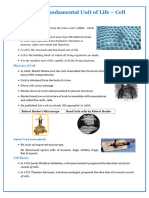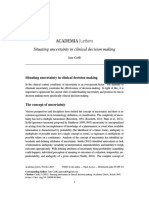0% found this document useful (0 votes)
183 views12 pagesThe Cell-Structure and Functions (BIOLOGY)
The cell is the basic structural and functional unit of all living organisms, often called the building block of life. Cells can be prokaryotic, lacking a defined nucleus, or eukaryotic, with a nucleus and organelles enclosed within membranes.
Uploaded by
vkr2225Copyright
© © All Rights Reserved
We take content rights seriously. If you suspect this is your content, claim it here.
Available Formats
Download as PDF, TXT or read online on Scribd
0% found this document useful (0 votes)
183 views12 pagesThe Cell-Structure and Functions (BIOLOGY)
The cell is the basic structural and functional unit of all living organisms, often called the building block of life. Cells can be prokaryotic, lacking a defined nucleus, or eukaryotic, with a nucleus and organelles enclosed within membranes.
Uploaded by
vkr2225Copyright
© © All Rights Reserved
We take content rights seriously. If you suspect this is your content, claim it here.
Available Formats
Download as PDF, TXT or read online on Scribd
/ 12
























































































